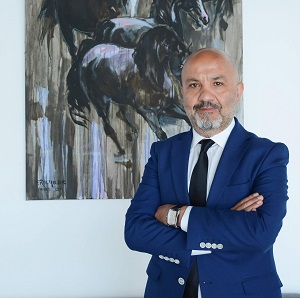
The “monkeypox outbreak”, which emerged at a time when the COVID-19 pandemic started to lose speed and the society began to breathe easily, brought along the fears of whether a new pandemic is starting. The first case of monkeypox disease, which started to be seen in the world in May, was also detected in Turkey last week. The news announced by the Minister of Health of the Republic of Turkey, Fahrettin Koca, on his social media account, revived the concerns about whether the disease will spread in Turkey and the TRNC. The World Health Organization announced on July 7 that there are over 6,000 cases worldwide. So, can a monkeypox outbreak really turn into a pandemic? Near East University Acting Rector Prof. Dr. Tamer Şanlıdağ commented on the unknowns of monkeypox disease.
Smallpox vaccine is less likely to create cross immunity!
Stating that the disease was first diagnosed in 1958 in monkey colonies kept for research, Prof. Dr. Tamer Şanlıdağ stated that monkeypox was first detected in humans in 1970. In other words, although many of us hear the name of the disease for the first time, its history actually goes back 60 years. Stating that the symptoms of the disease are similar to smallpox, which was determined to have disappeared worldwide in 1980, Prof. Dr. Tamer Şanlıdağ, however, finds the claims that the smallpox vaccine made in the past years will create immunity against the disease are too optimistic. Reminding that smallpox disappeared in the 1980s, Prof. Dr. Şanlıdağ emphasized that studies have shown that single-dose smallpox vaccine provides protection for 10 years and multiple-dose smallpox vaccine up to 30 years.

Monkeypox hard to reach COVID-19 prevalence
Emphasizing that the monkeypox virus is a DNA virus, unlike SARS-CoV-2, which causes COVID-19, Prof. Dr. Tamer Şanlıdağ said, “DNA viruses are less likely to mutate than RNA viruses.” Prof. Şanlıdağ stating that, on the other hand, this does not mean that the virus cannot mutate at all, further said, “The atypical transmission trends seen in recent cases reveal the possibility that the virus may have acquired different characteristics. This will be determined by research to detect changes in the genetic material of the virus. I expect the results of the research to be shared with the scientific world in the near future.” Stating that the virus is not contagious during the incubation period, Prof. Dr. Şanlıdağ said, “Symptoms must have started for the virus to be transmitted. Therefore, it is easier to avoid the virus with visible symptoms,. Apart from rash or lesions, monkeypox also has symptoms such as swollen lymph nodes, muscle and back pain, weakness, fever and intense headache.
One of the features that prevents the virus from spreading quickly is the type of transmission. Monkeypox virus is transmitted by very close and prolonged contact. Transmission of the monkeypox virus, which requires close contact rather than respiratory transmission, limits its spread. Especially in recent cases, it tends to be sexually transmitted.
Prof. Dr. Tamer Şanlıdağ saying that it is therefore difficult for monkeypox to be transmitted as quickly as COVID-19, added: “It is possible to predict that the number of cases will be limited, although it is seen in many parts of the world at the same time.”